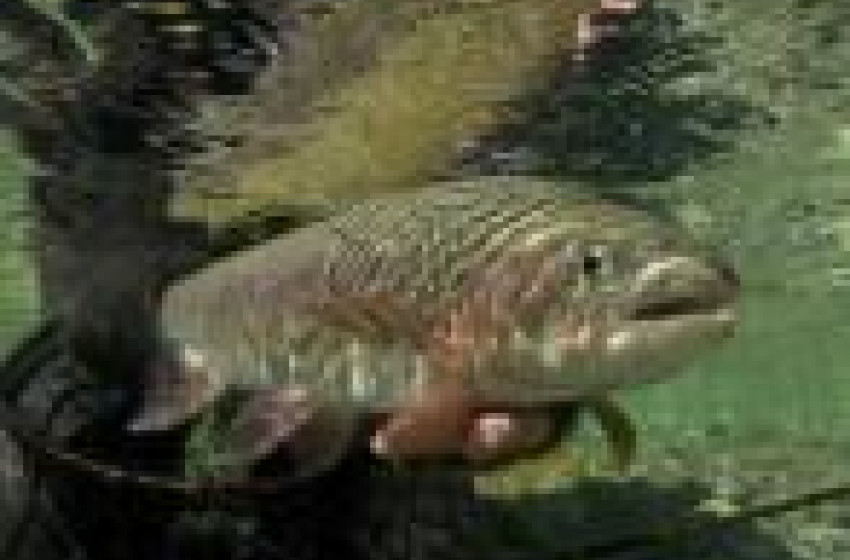Creasy's Column - by Hugh Creasy March 2017
- 31/03/2017

I like to doze in the afternoons. Not that I’m lazy – I just find it pleasant. Early morning is activity time, when the air is clean and fresh and cicadas are waking and trout move in sun-dappled pools. The first hatches of mayflies rise in the still air and gnats spin in circles. Swallows dip to the water, scattering silver drops as they take hatching caddis, and as the sun warms the boulders at the bottom of the run, trout rise. At the head of the run, on boulders beside the pool, shags spread their wings in the sun. They lack beauty of form and function, dripping wet and dishevelled, squawking in discordant tones that match their appearance – more like their dinosaur ancestors than creatures of song and glorious flight.
The riverbed stones are slime-encrusted, and in the backwaters backswimmers, like tiny rowers, ply the shallows, delivering deadly bites to their prey. Midge larvae and bloodworms crowd a larger pool harvested by damsel larvae and fat-bodied dragons. Along the edges of running water, bullies dart for cover as an angler’s shadow passes. There are husks of hatched stoneflies on the lee side of mid-water boulders, and in scummy backwaters bodies of porina moths float. They died last night, trying to cross the river to farmhouse lights on the other side. The backwater holds a stew of insect deaths. There are lacewings and caddis, spent mayflies, harlequin flies and a drift of midges. A close look reveals a scum of smuts, so tiny you wonder at their ability to fly, or to survive at all.
It’s all in balance – life and death – the music of existence of which mankind is a part. It can be explained by mathematical equation or by the various disciplines of science. I prefer the explanations of poetry and human emotion. There is beauty in dappled sunlight and in air so fresh it can be tasted and in water so clear it magnifies and disturbs one’s sense of proportion. Crack willow may be a pest in many areas, but it shades the riffles where trout will spawn, and in its scarlet roots eels entwine, mouths agape and pulsing as they pursue the crayfish that beat a retreat to muddy inclines.
There is rough water that pulses the heartbeat of the river, refreshed with oxygen before plunging into pool and run. The rapids hold torrent fish – dwellers of the river, rarely seen. Even in the fast water there are habitable places where mayfly larvae cling to life and hard-cased caddis colonise the undersides of weed-covered boulders and stoneflies hunt their prey in that mysterious world where the force of water is held at bay – just off the bottom where the current is neutralised by mysterious forces. Science has an explanation, but explanation is not needed, just a sense of wonder. From here mayflies spiral to the surface, miraculously dry as they surface, wrinkled wings expanding in the sun’s warmth. They drift in flotillas, bending to the breeze before they take off on their mating flights. Such brief glory in the sunlight, but for years they have lived, hunted, been hunted and survived in the wilderness of the river. This is their final salute to life, and in their mating they will live on when the females dot, dot, dot on their upstream egg-laying journey, before collapse and drift on the water that gave them life.
It is water, clear, pure water, that lies at the base of our, and of all creatures’, existence.
There is a complex ecosystem that relies on the purity of water, and humanity stands at its apex.
Summer in the North Island has been wet, and the high rainfall has been a saviour, albeit temporary, for the Manawatu River. I was there the other day, amid squalls that blew brown-tinged spray into the air. The river is on the verge of death – becoming incapable of supporting life. Instruments placed in the river to measure turbidity levels and oxygen saturation, have in some places, become useless. The levels of weed and nitrates in the water mean the instruments give false readings. Nick Smith would be happy that the river is wadeable, but the bottom is so thick with slime it has become dangerous. All indicators point to a serious decline in water quality, even in its upper reaches, and there is no plan to alleviate the major causes of its demise.
The trouble is that people soon forget what clean rivers looked like. When the Manawatu, the Wanganui, the Rangitikei and the Waikato, as well as the East Coast rivers become sludge-filled ditches, people will accept them as the norm, and a new generation will never know what was or what could have been.
It has become a preventable tragedy.